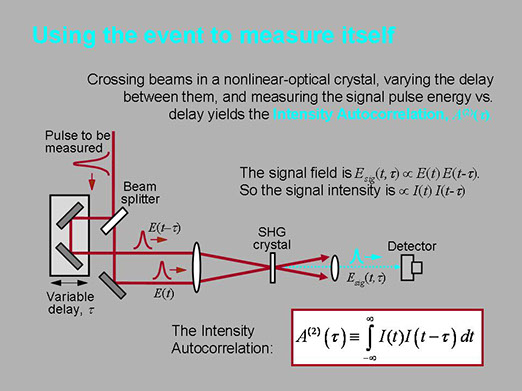Okay, so we need more information about the pulse vs. time. But to do that, we need a shorter event with which to resolve it, and, because ultrashort laser pulses are so short, we don't have one. The shortest event we have is the pulse.
We must use the pulse to measure itself.
But how? Two light beams that cross each others' paths don't affect each other. But, in the field of nonlinear optics, that's not the case, and they can actually generate a new beam of another color. The most common example of this phenomenon is second-harmonic generation (SHG), in which two pulses overlap in a SHG crystal and generate another pulse with a new wavelength (half that of the input pulses) and a new frequency (twice that of the input pulses).

So vary the delay between the two pulses and measure the SHG pulse energy vs. delay.
The resulting technique was called "Intensity Autocorrelation," or simply "Autocorrelation."
